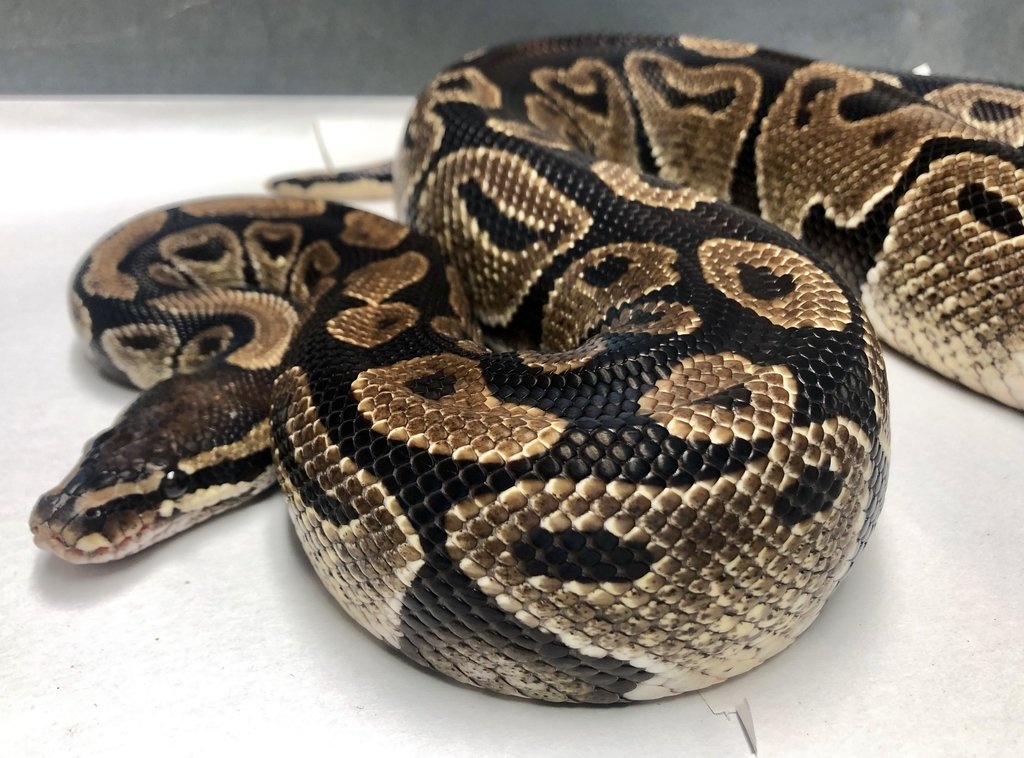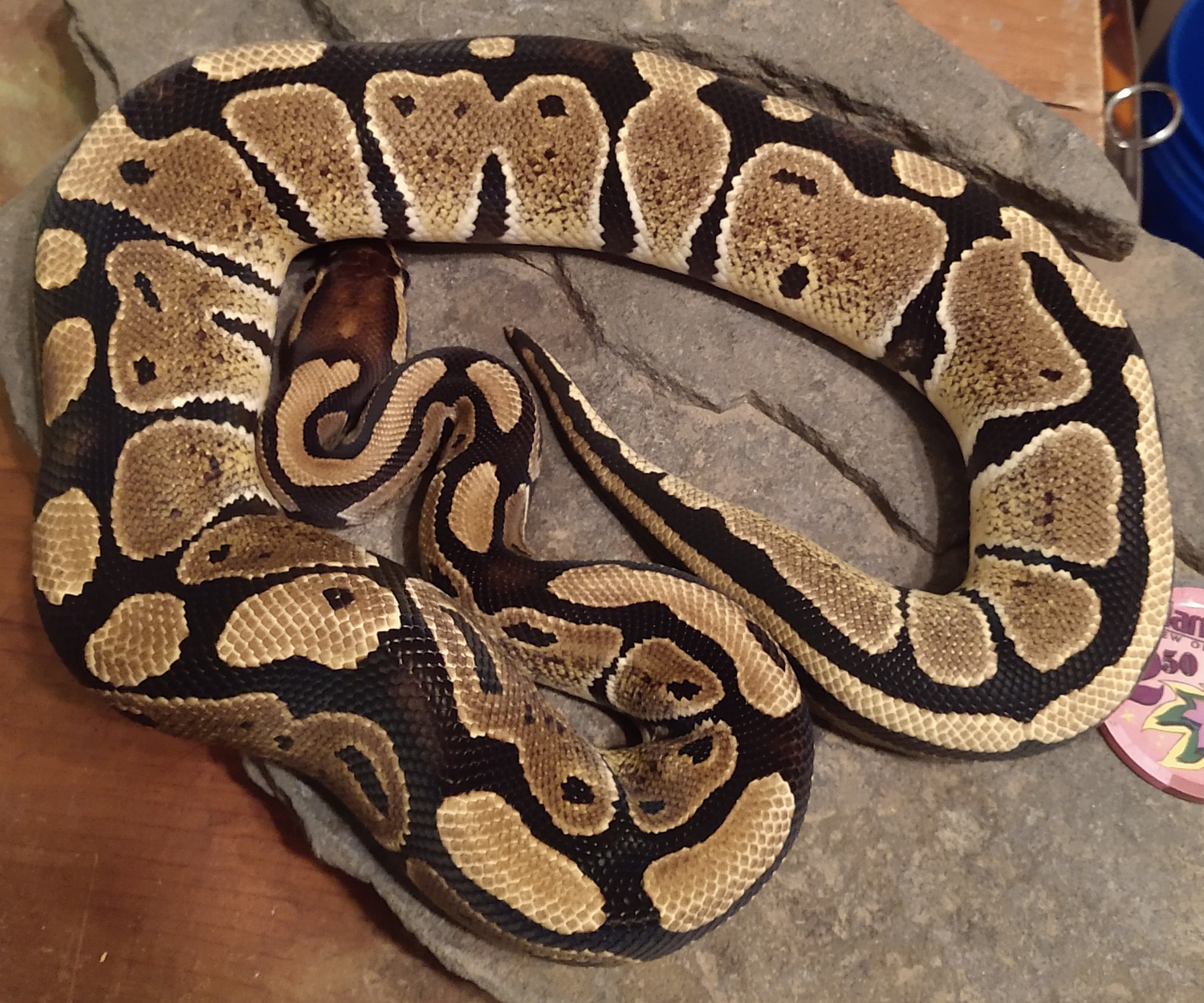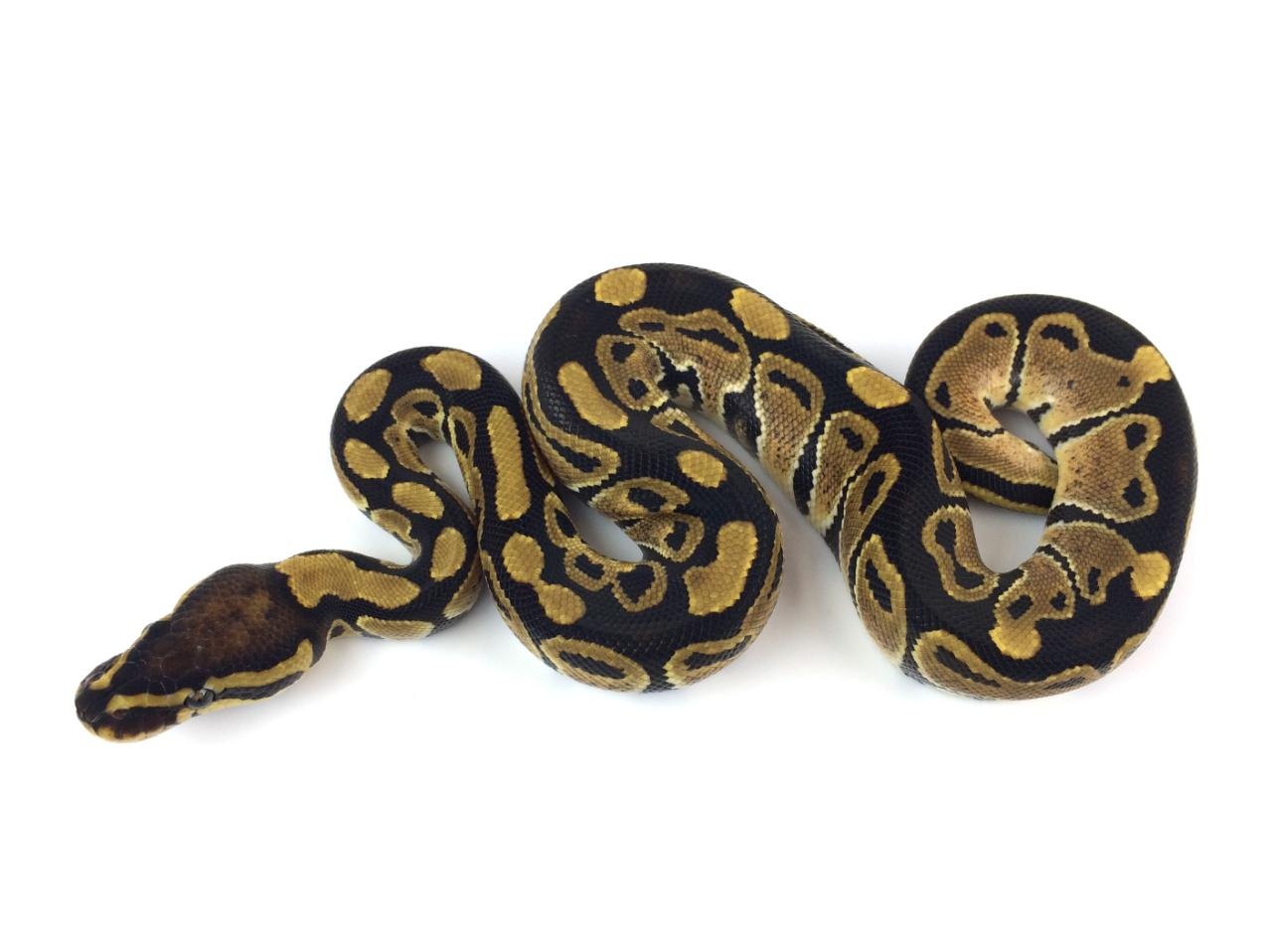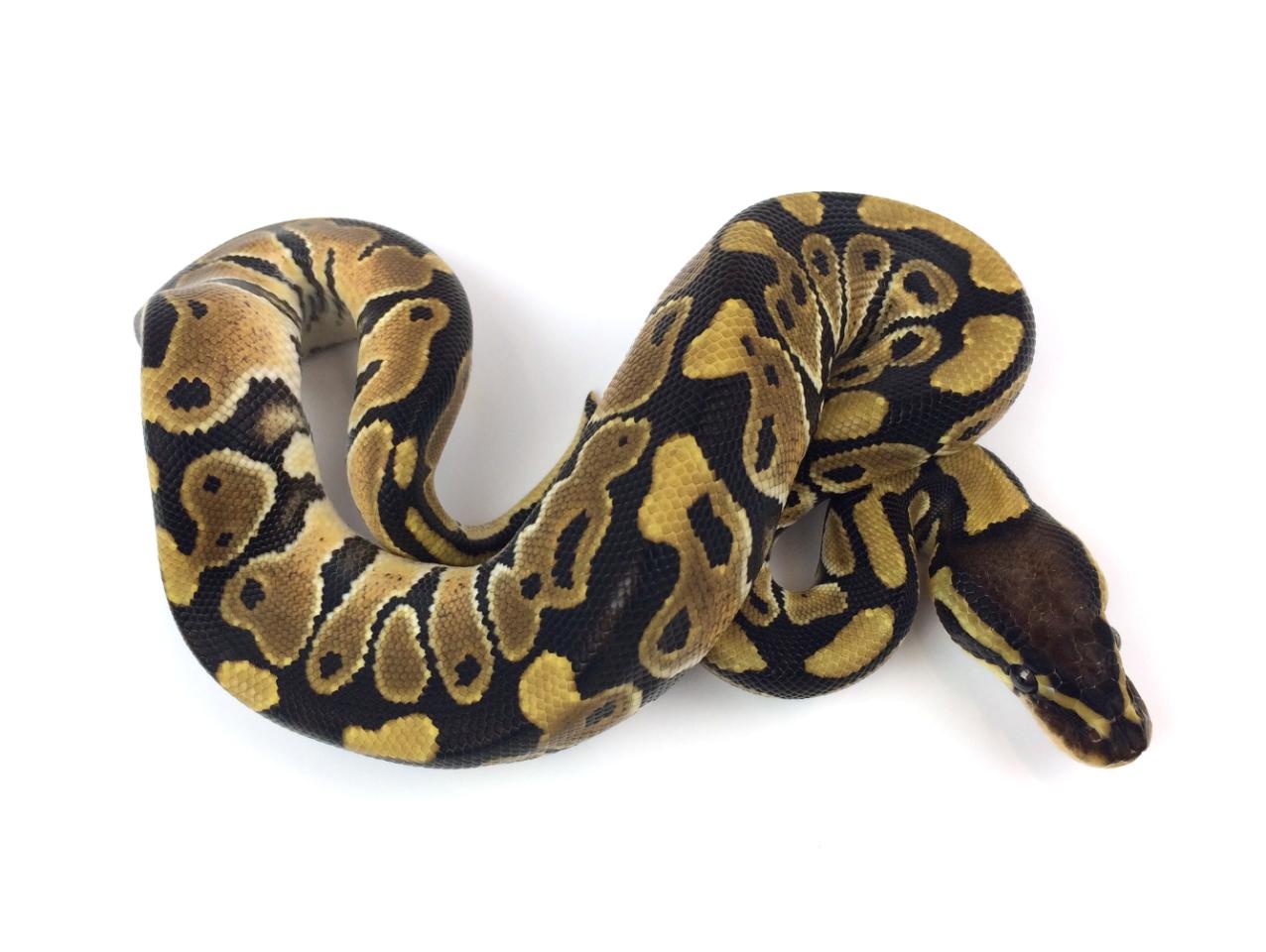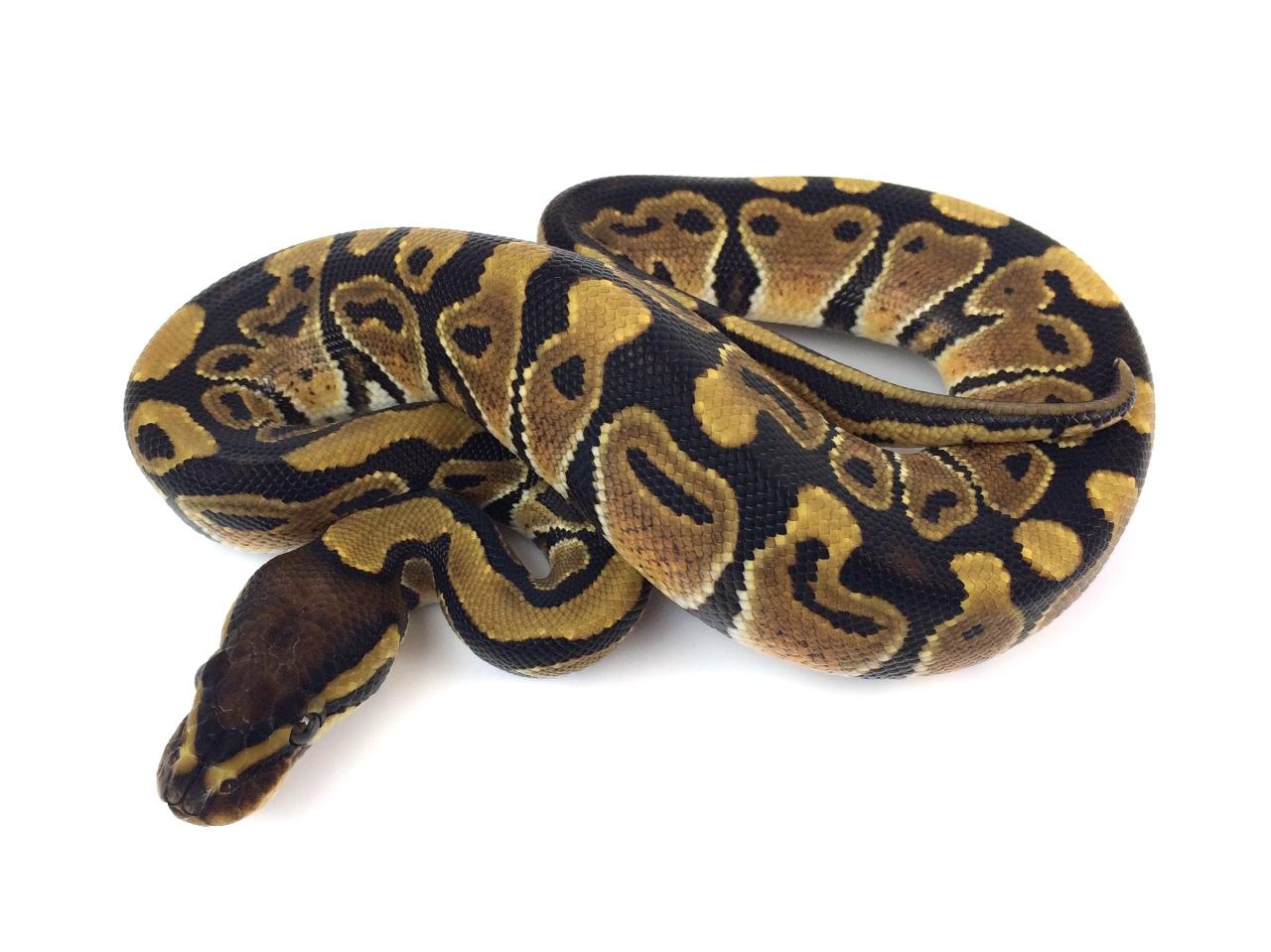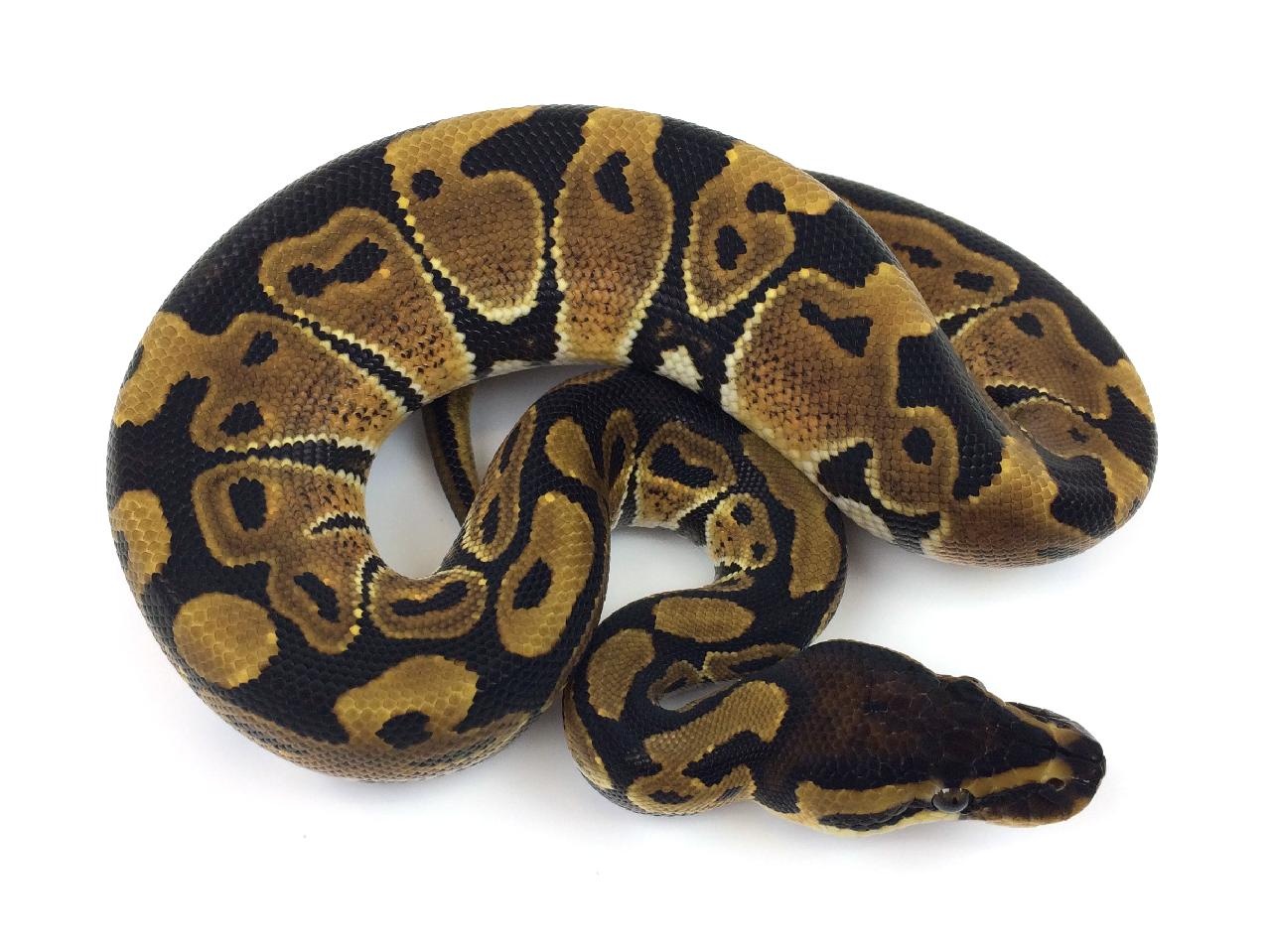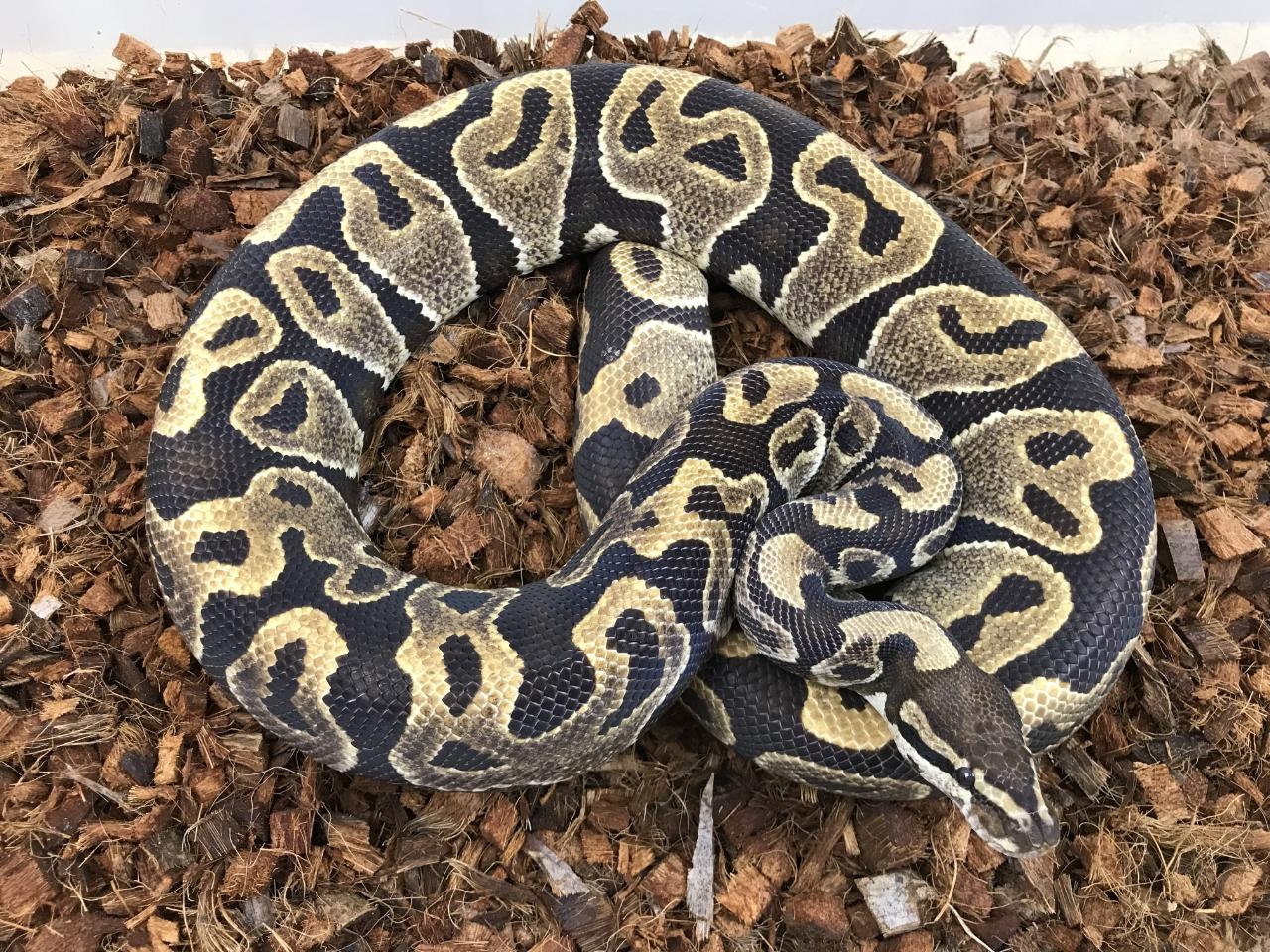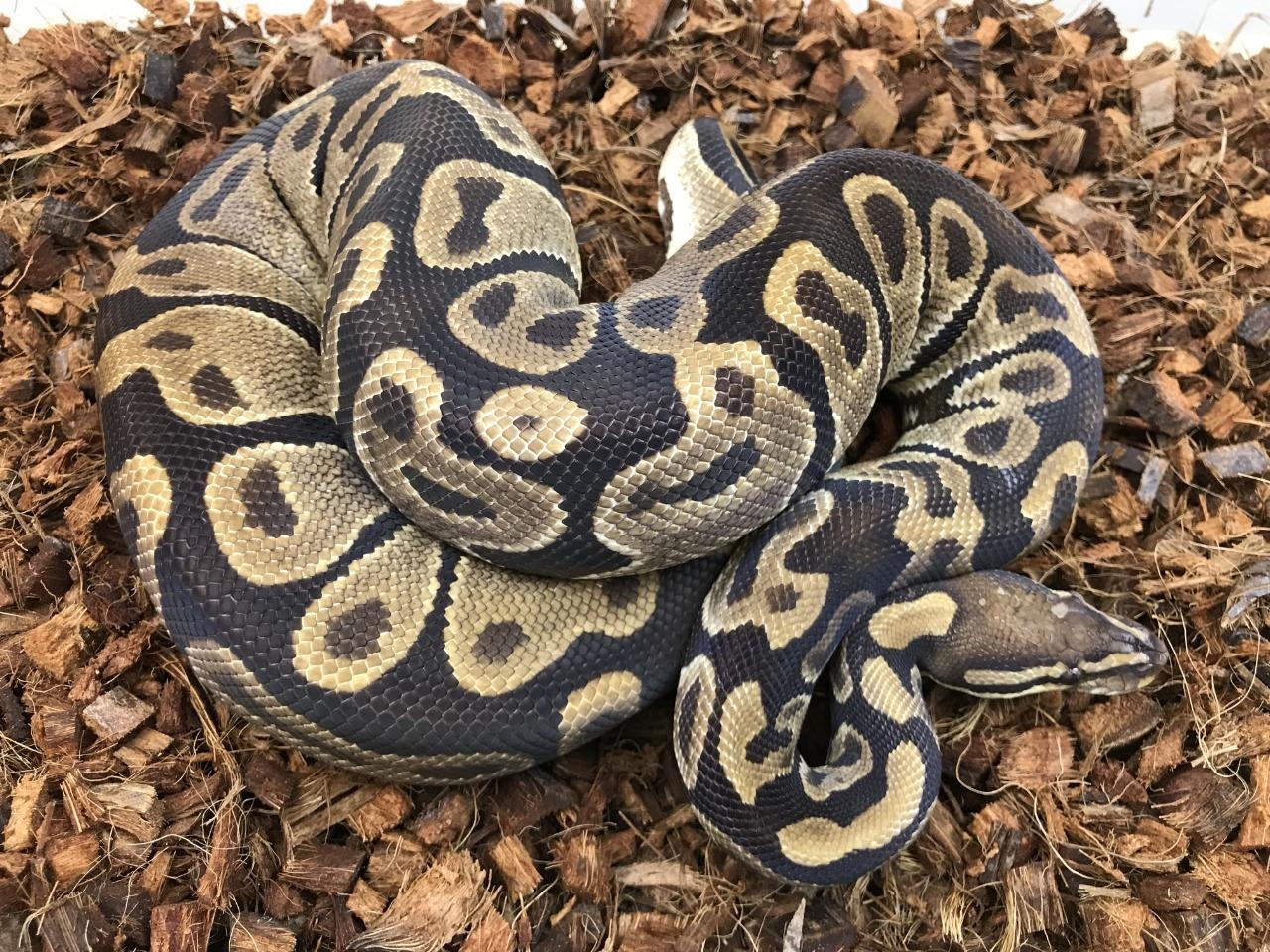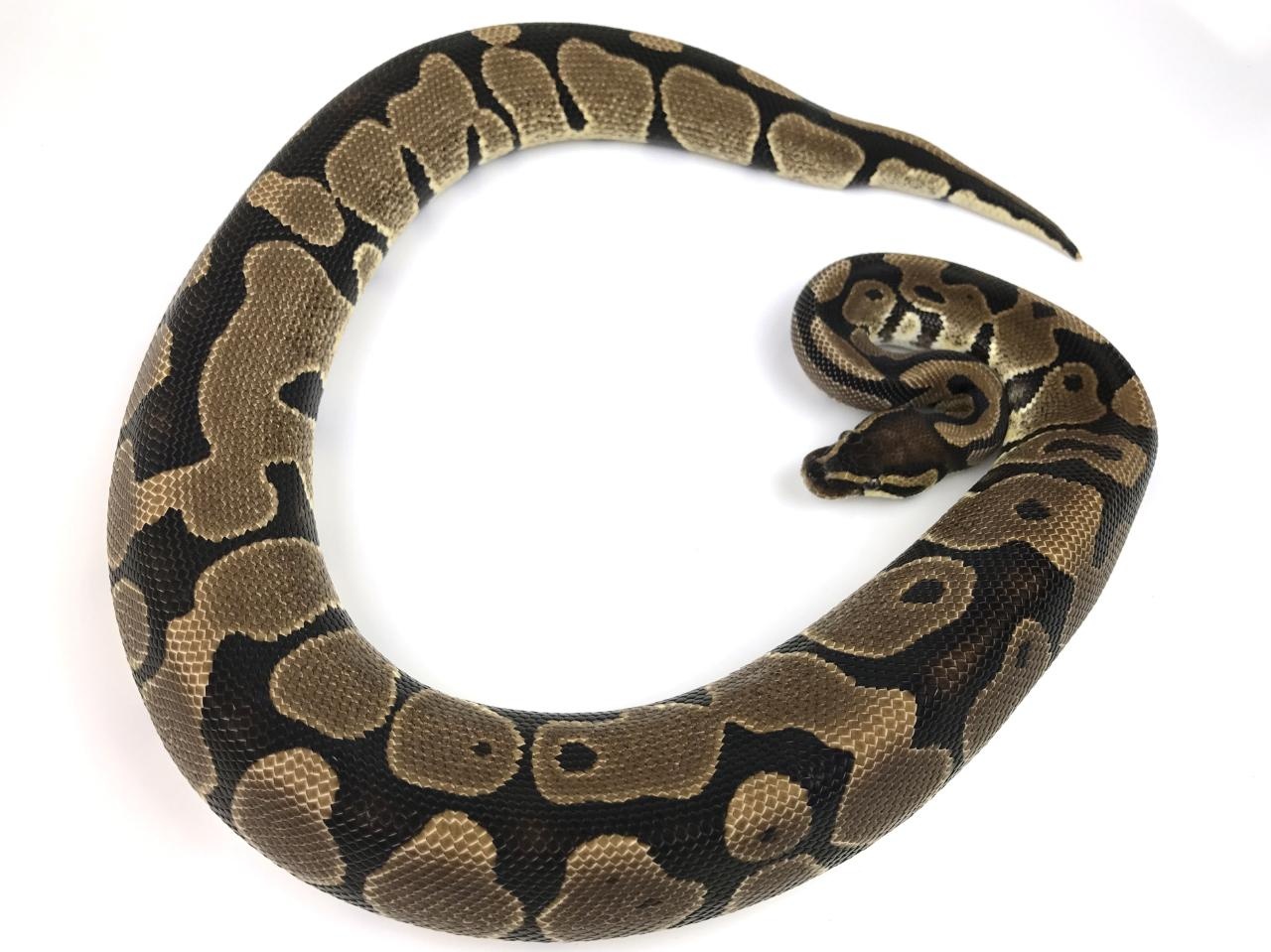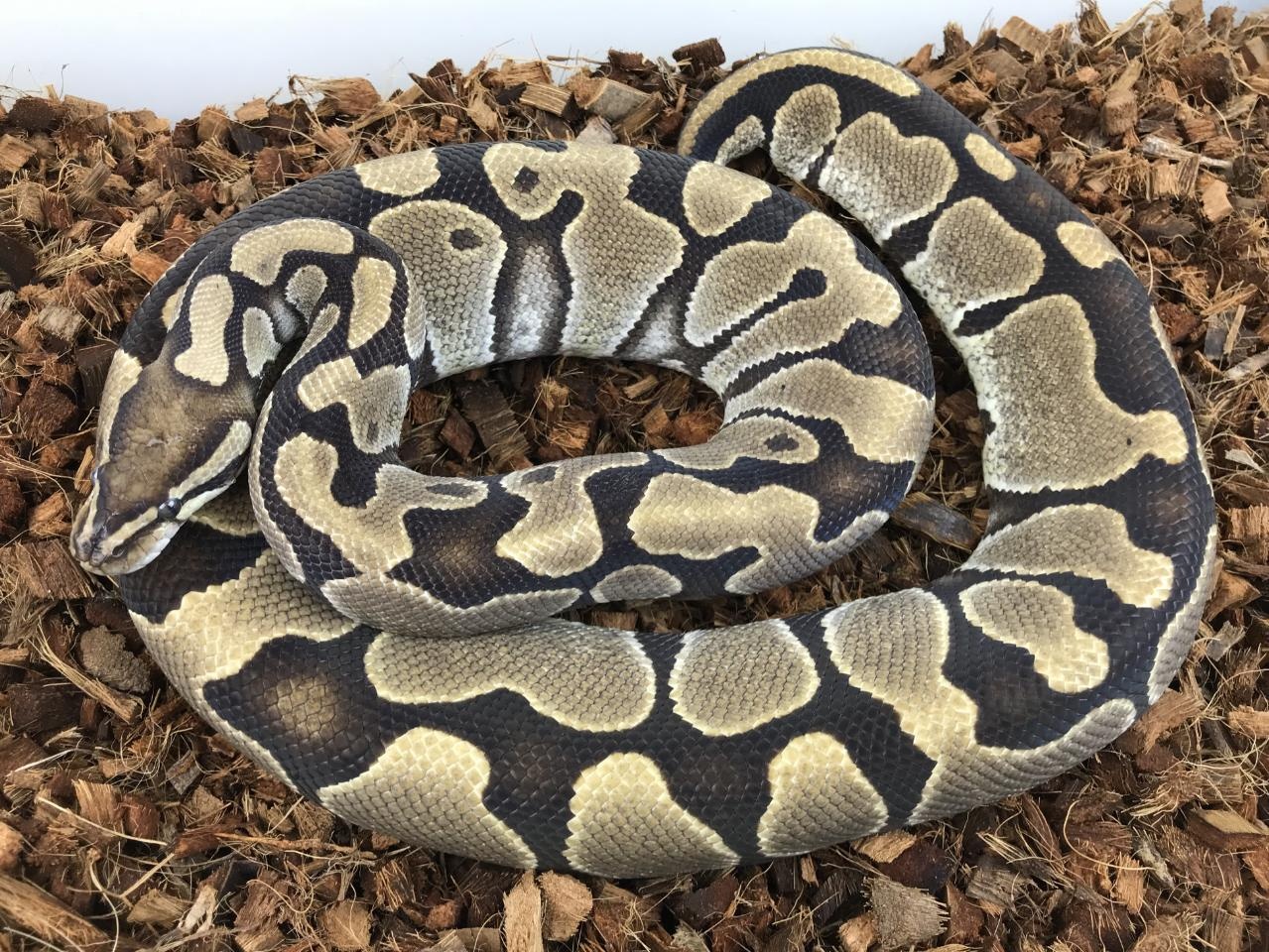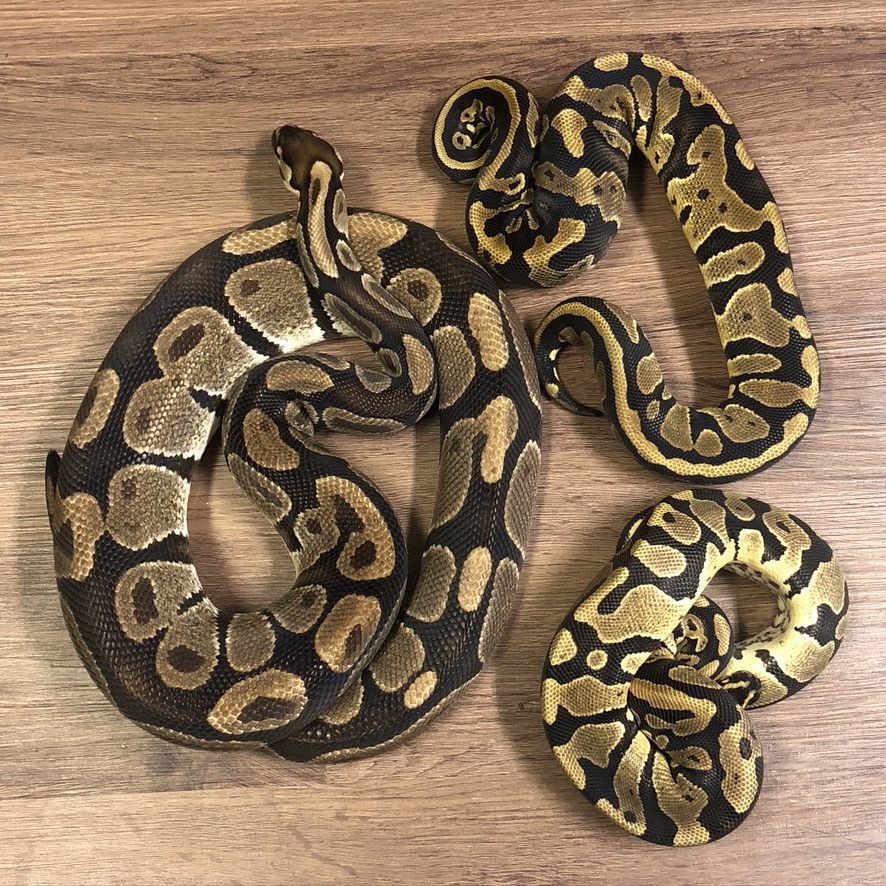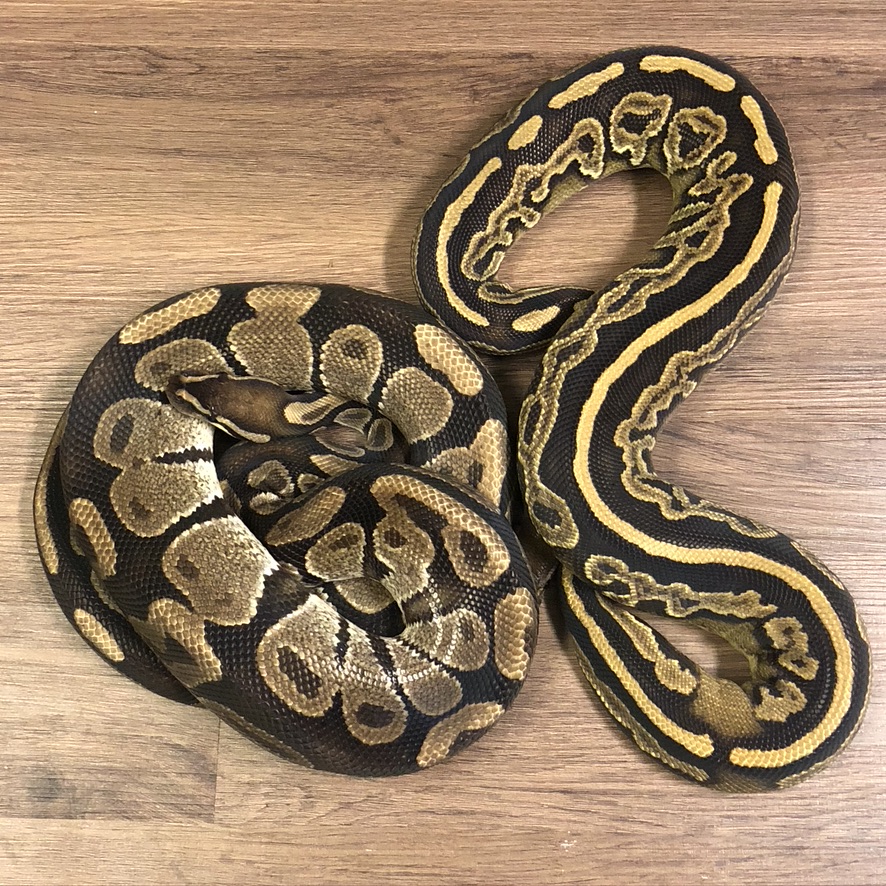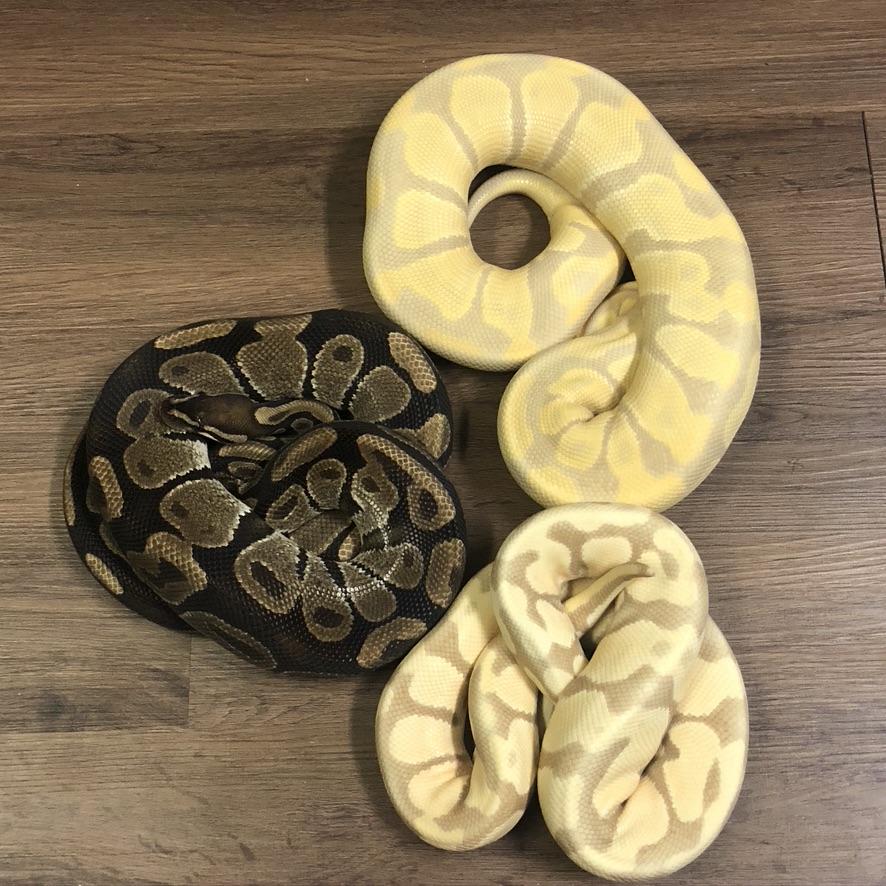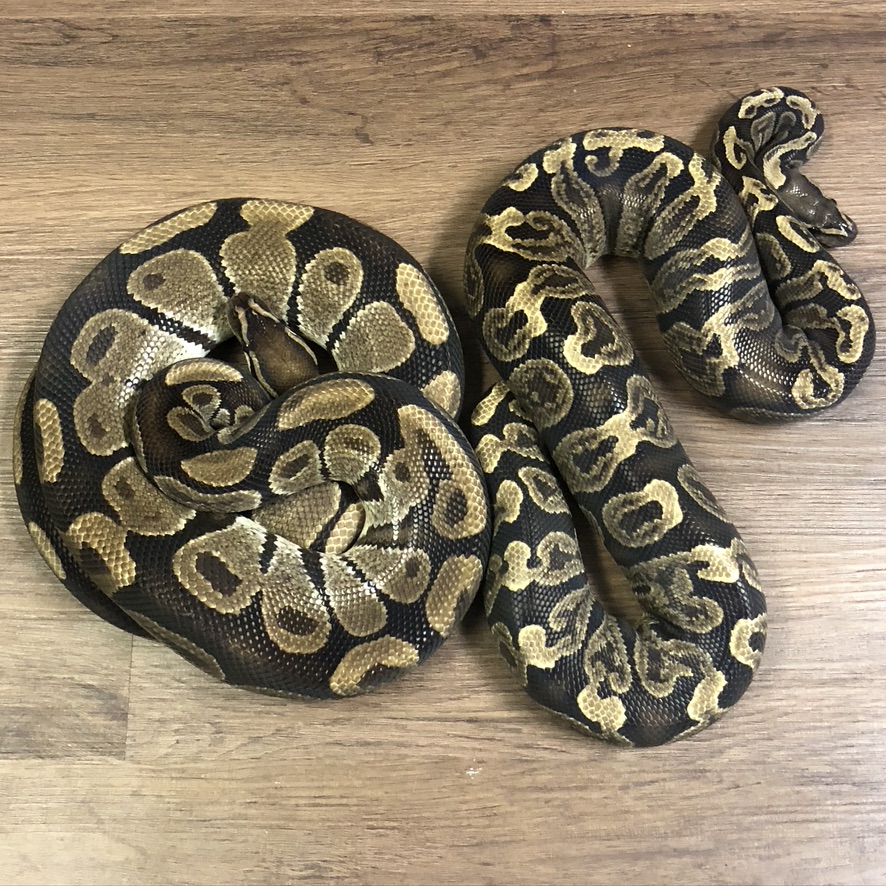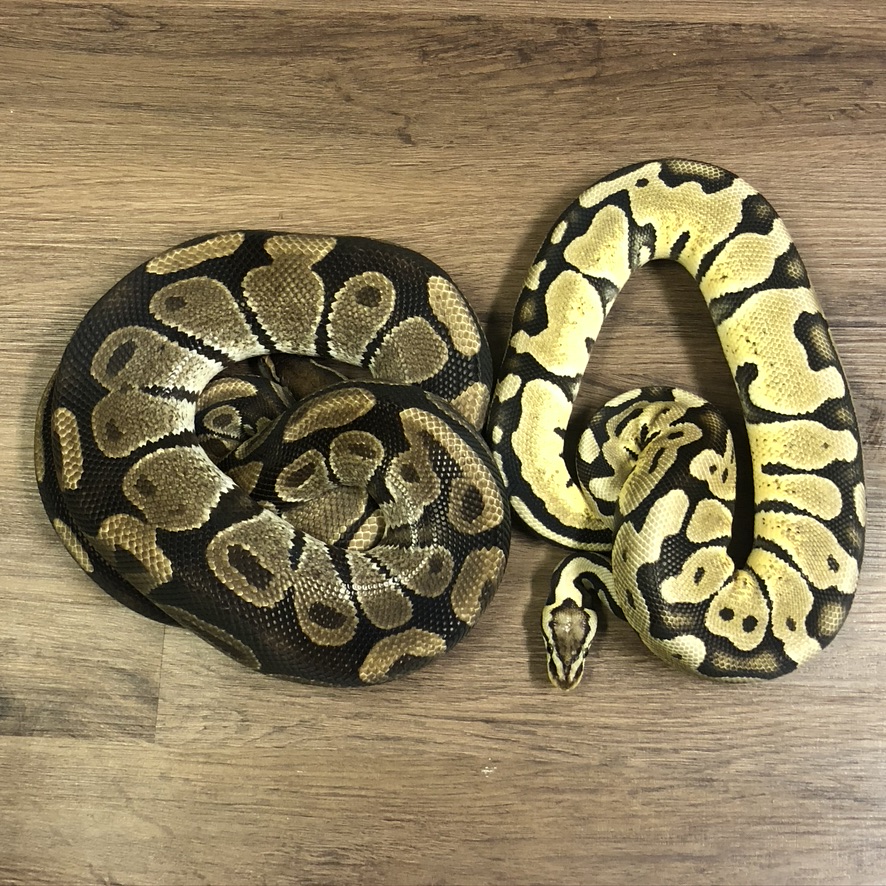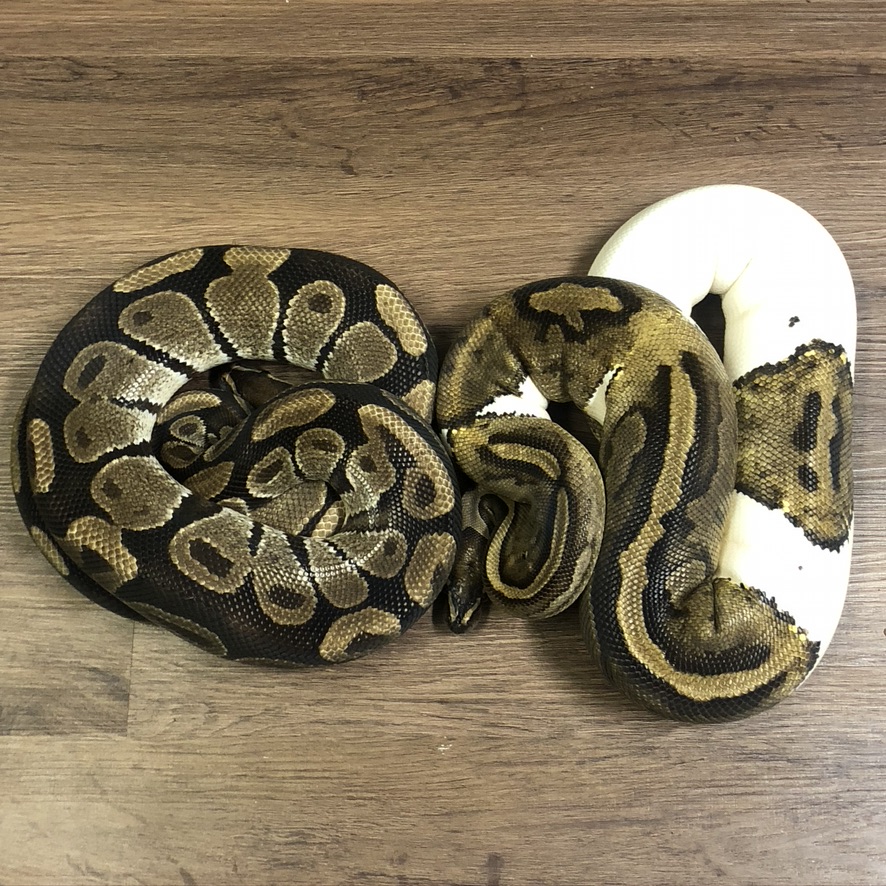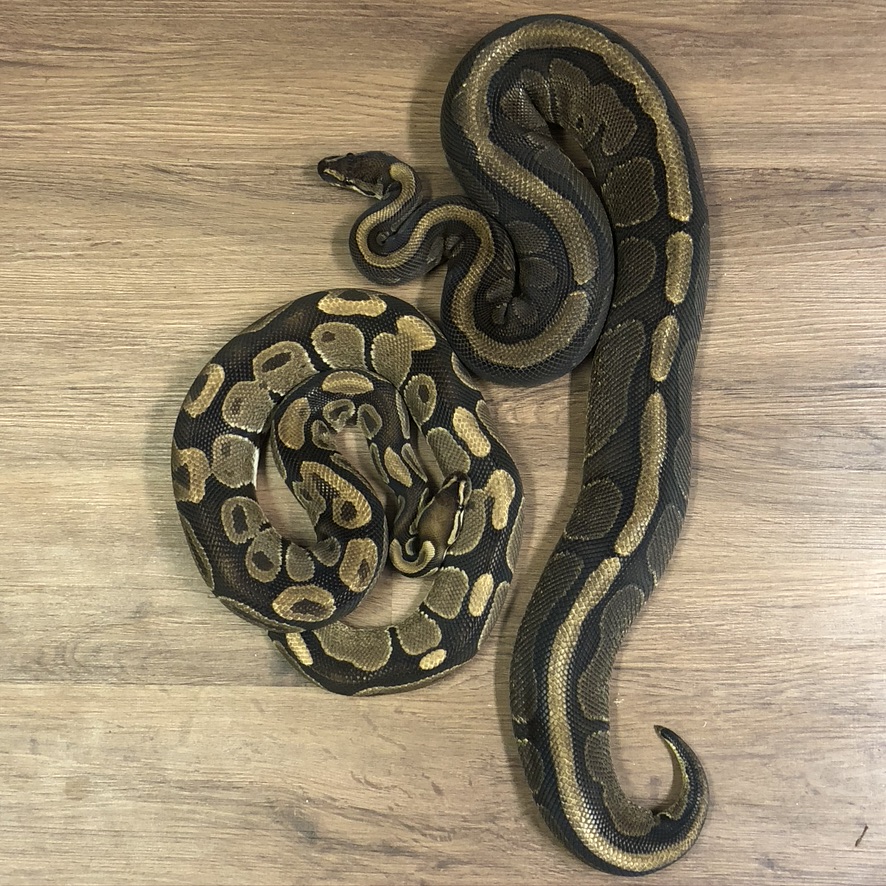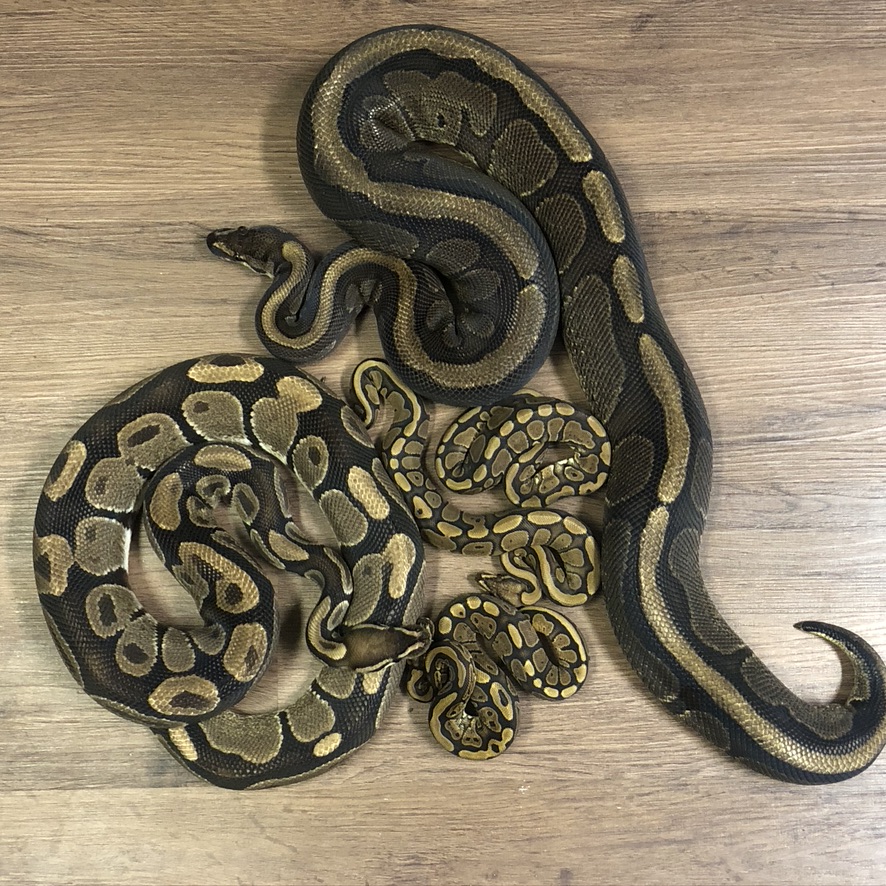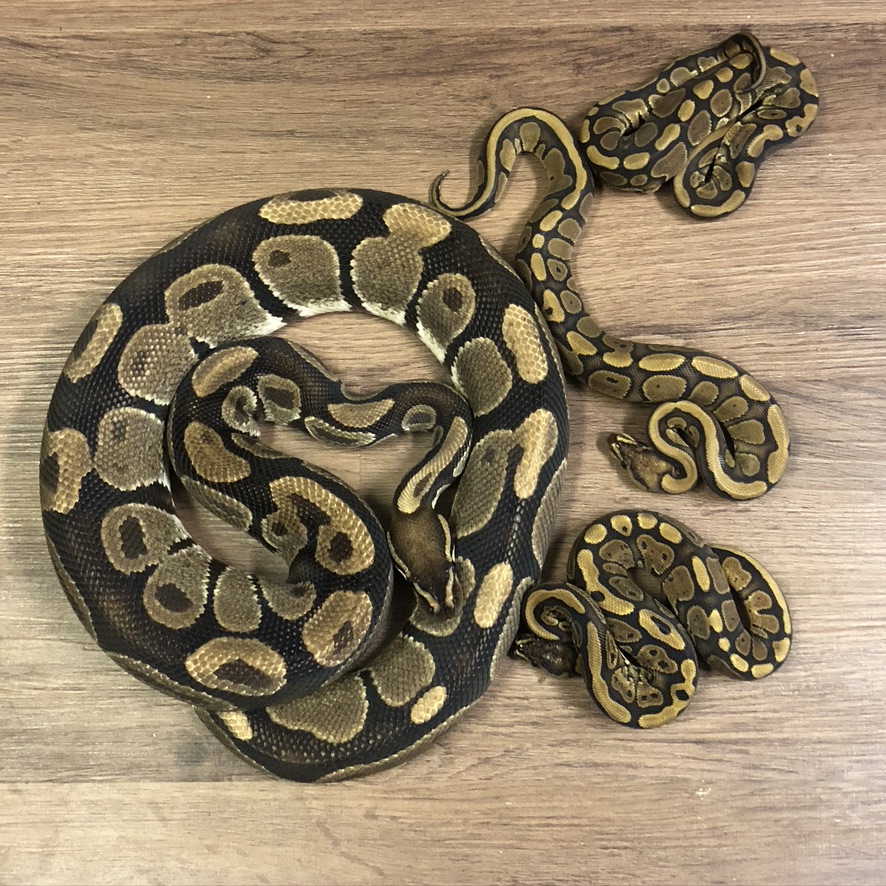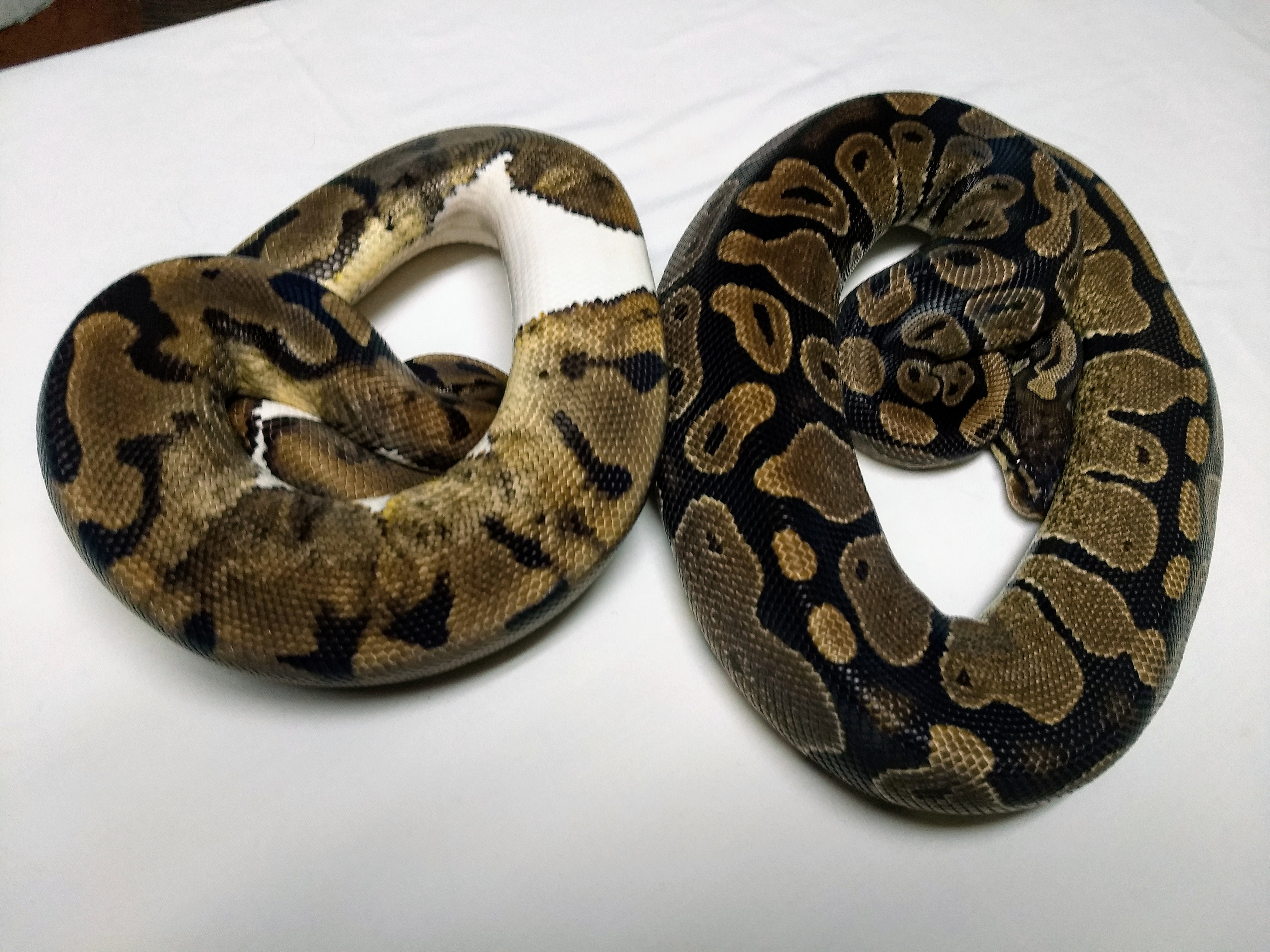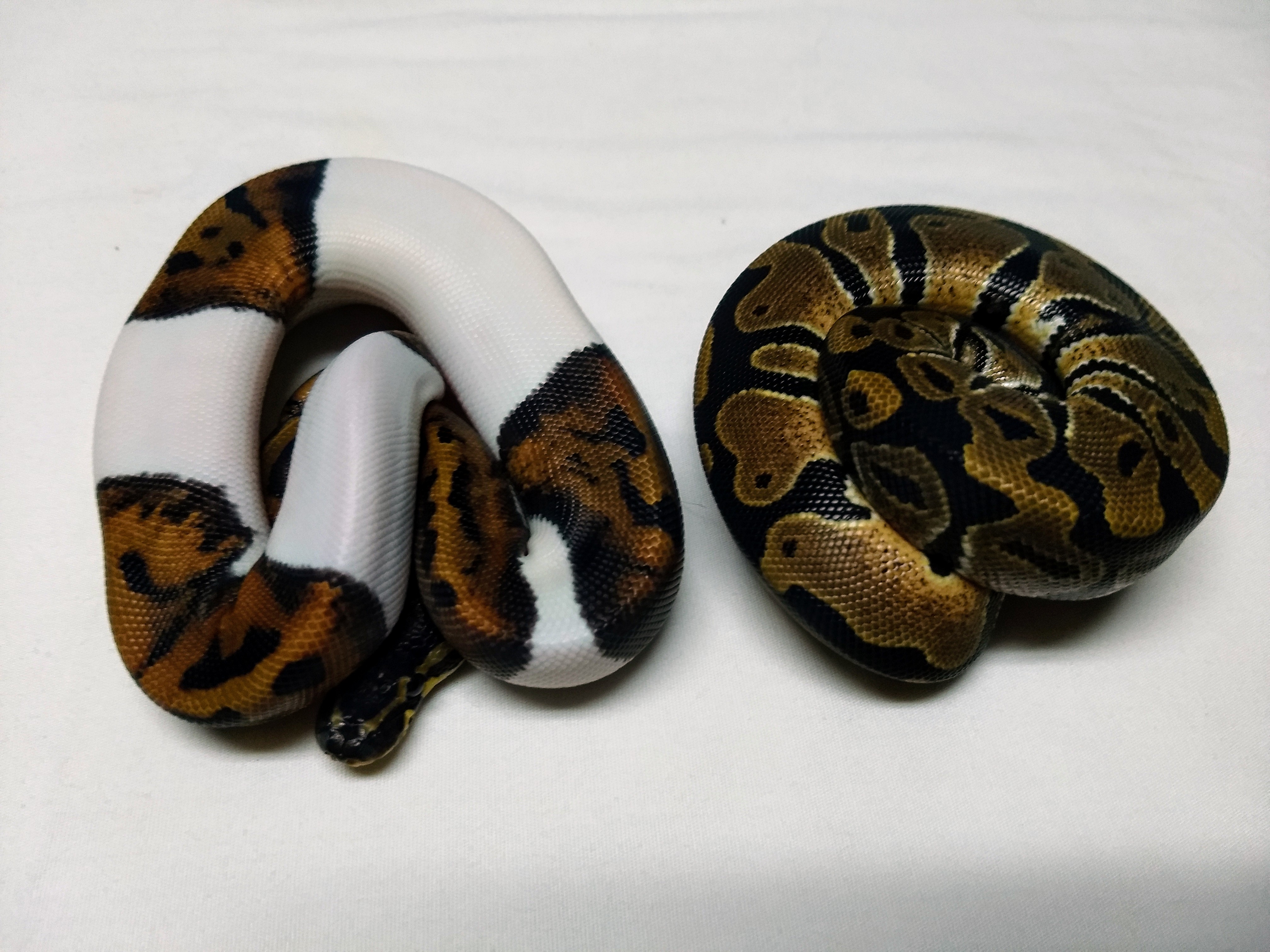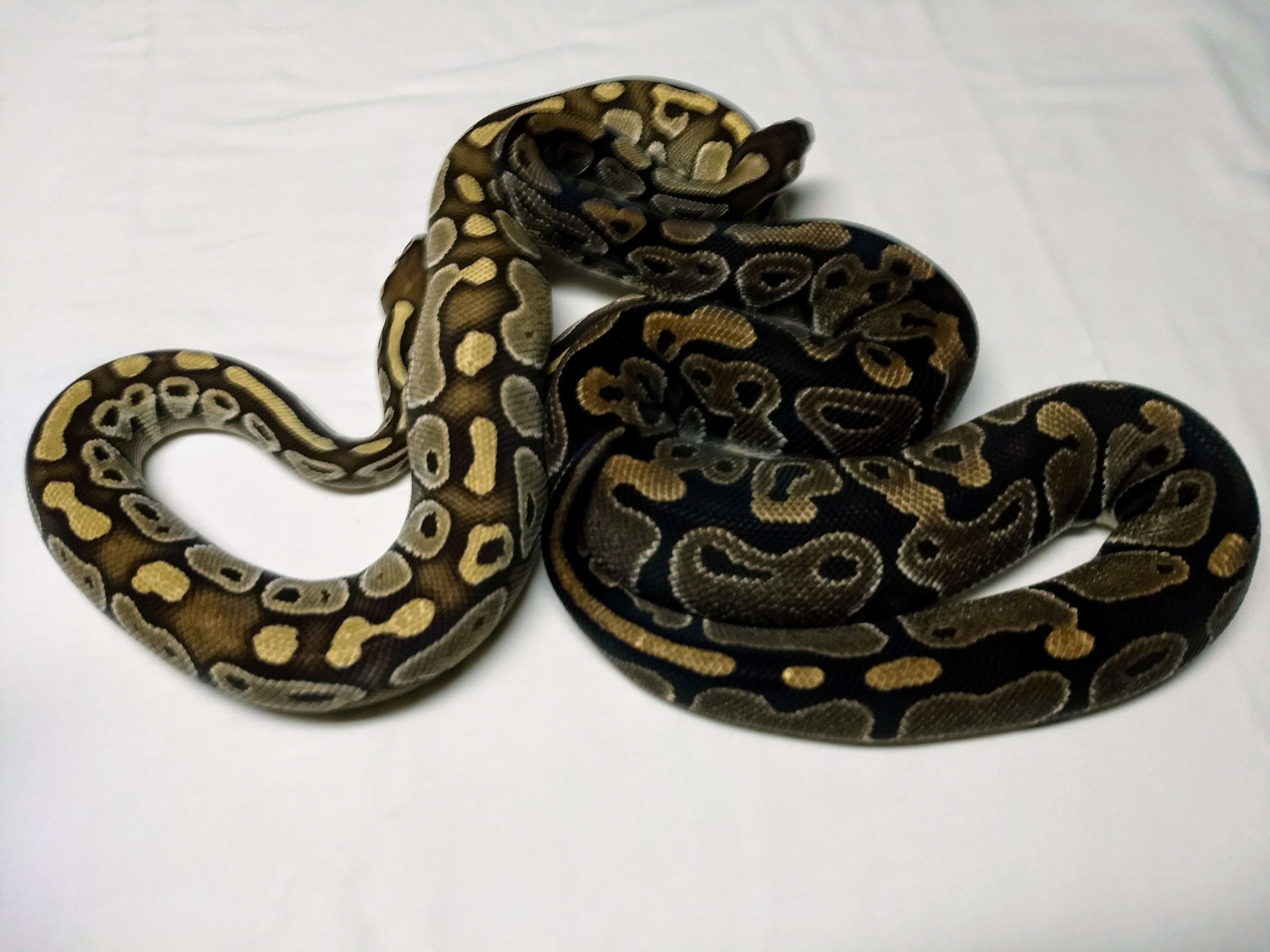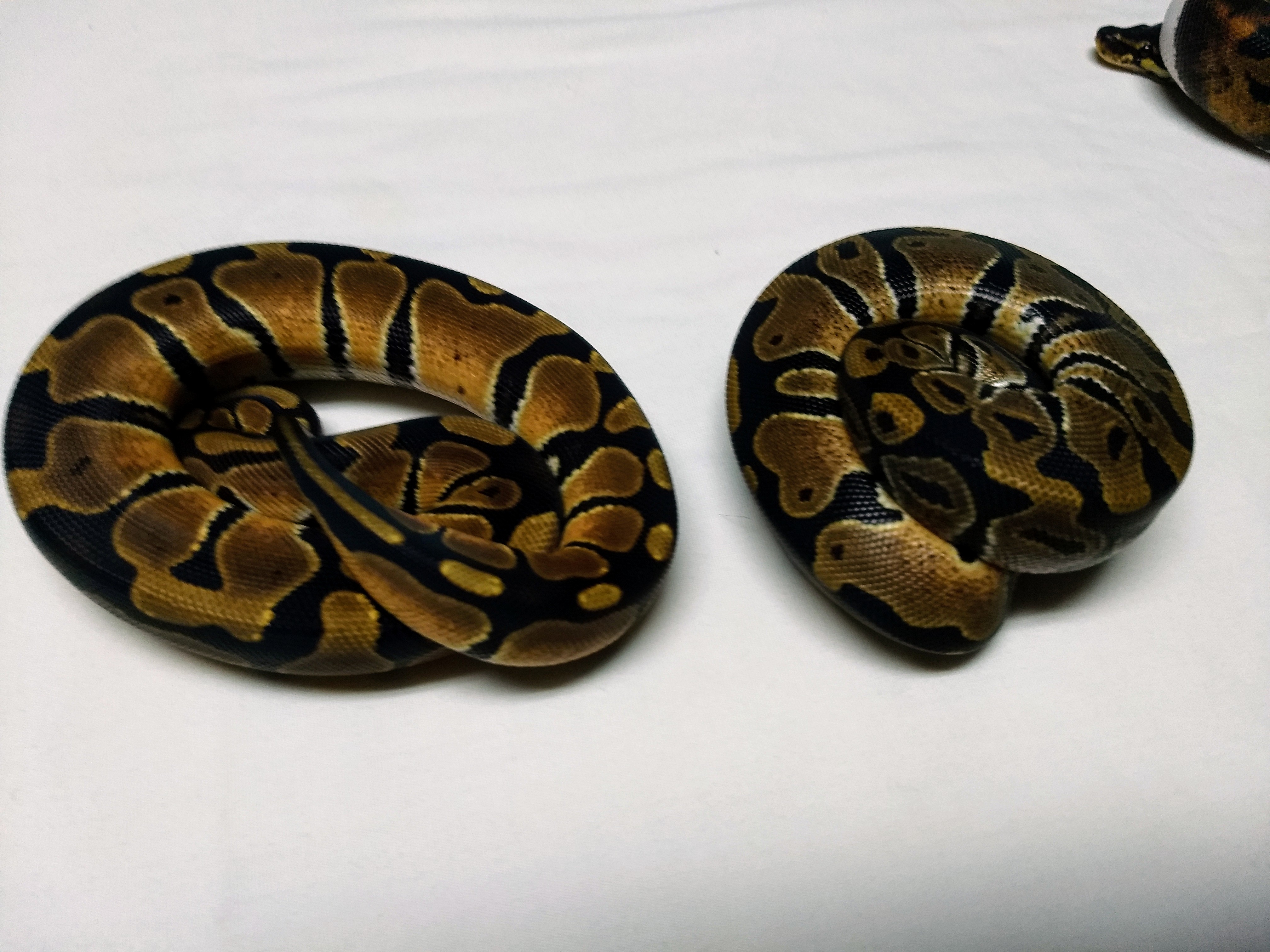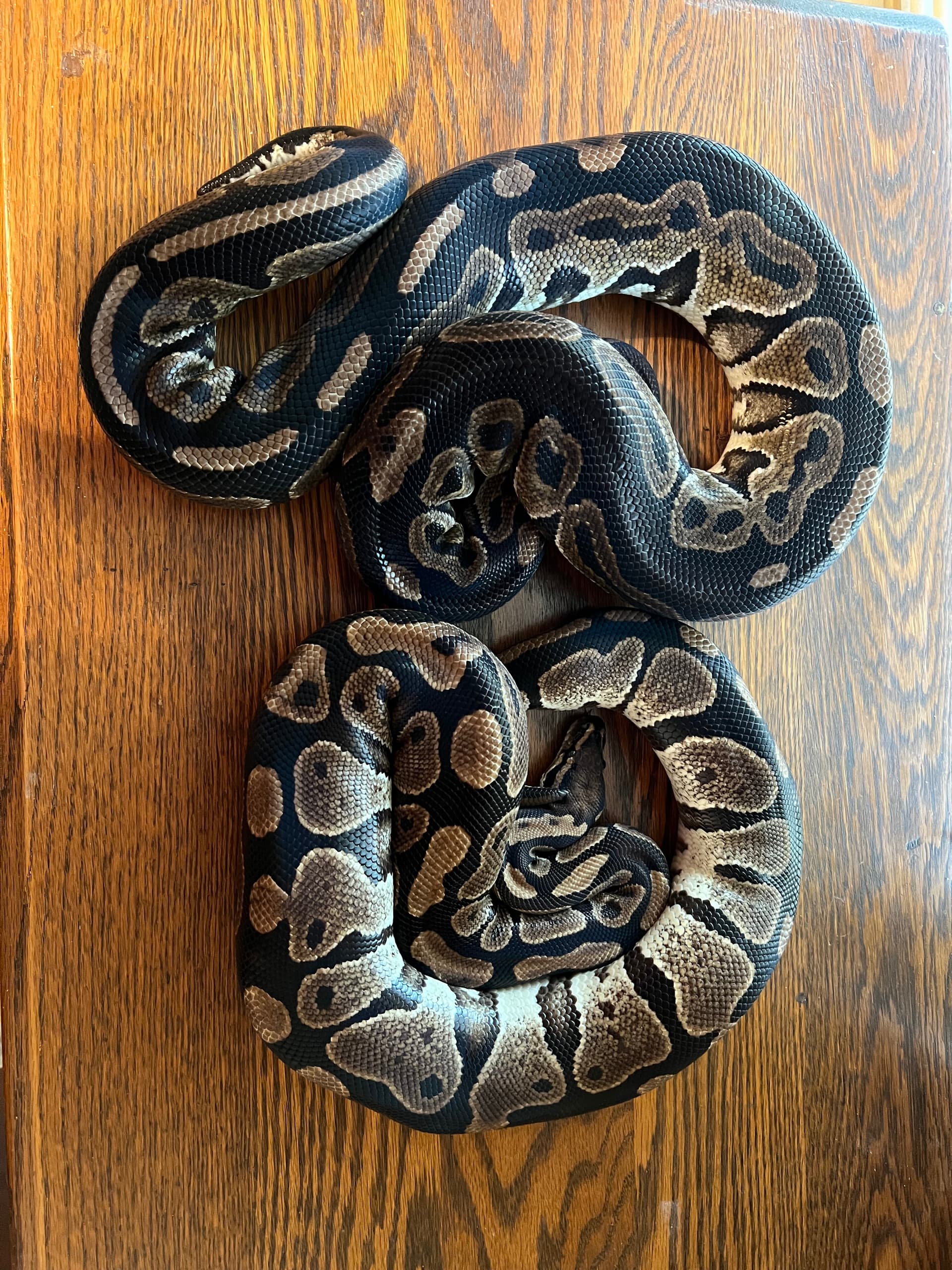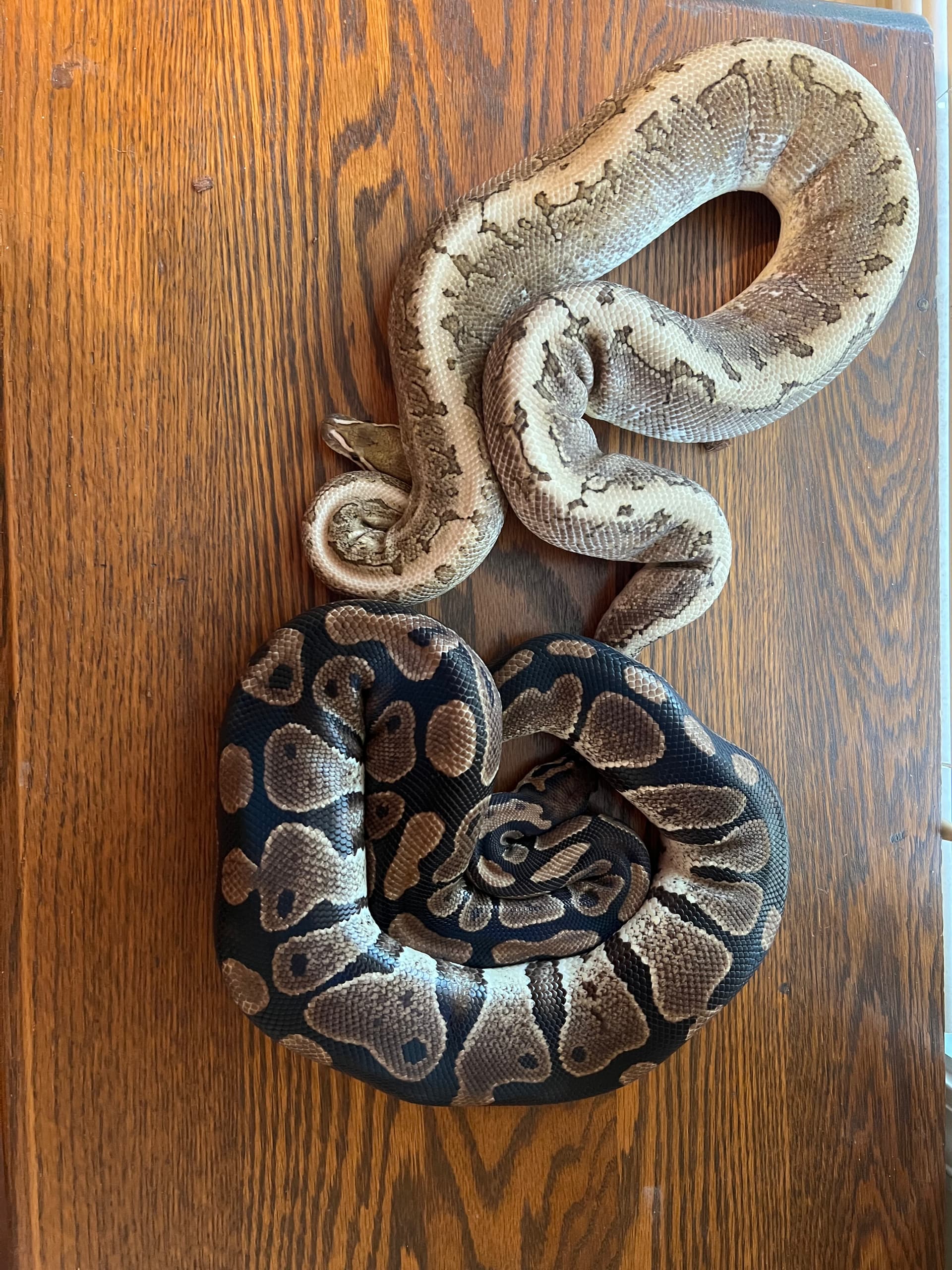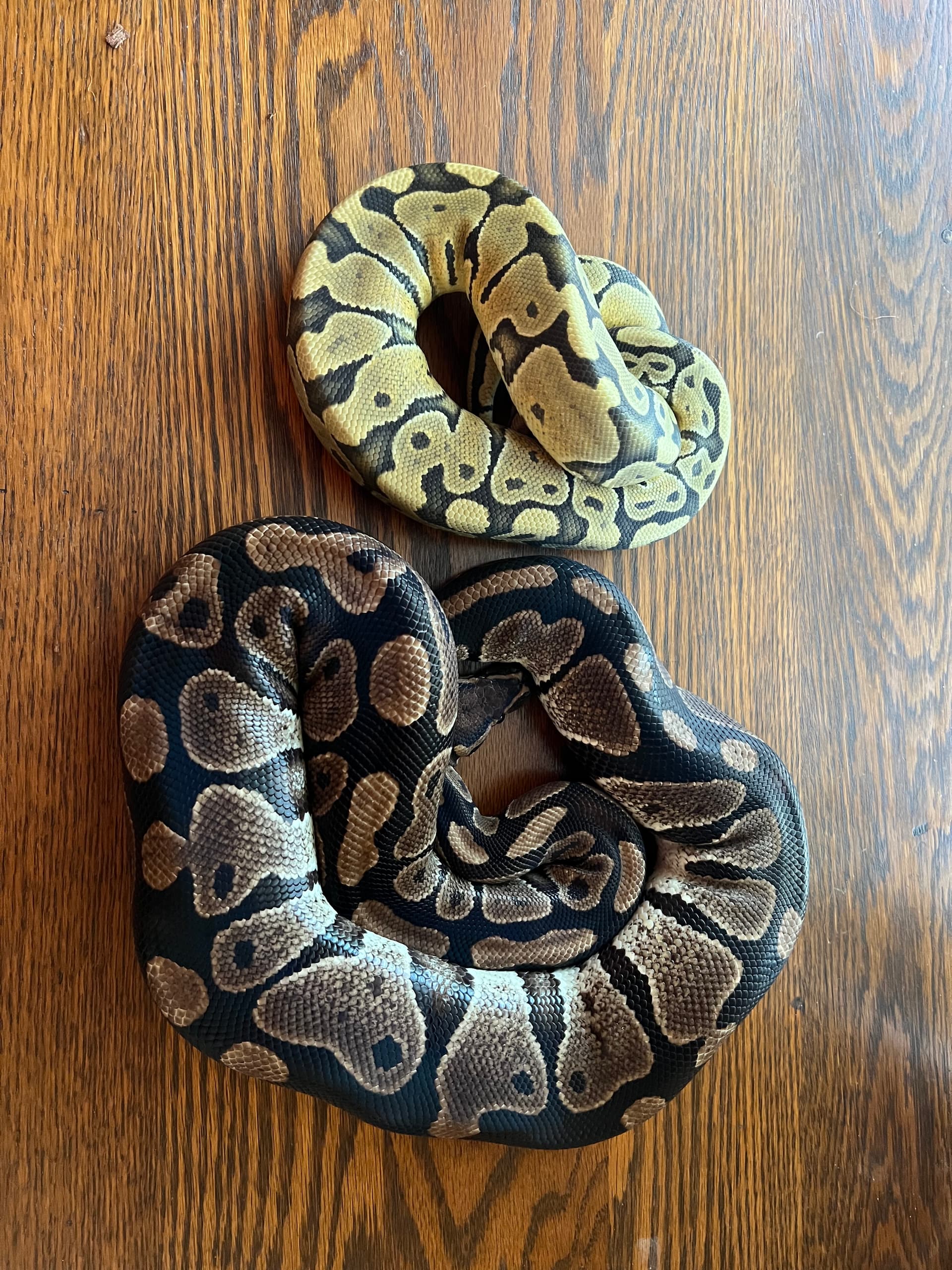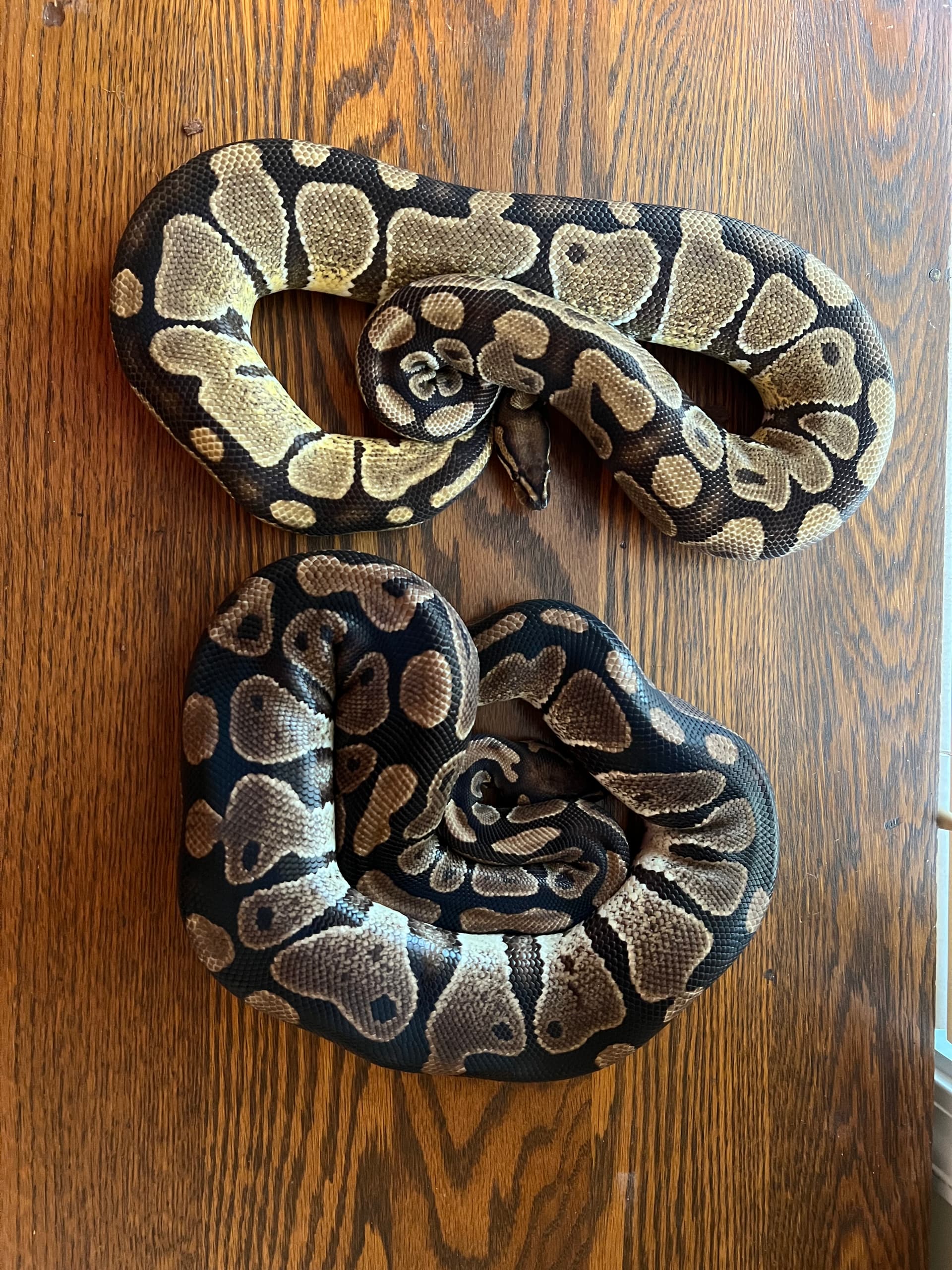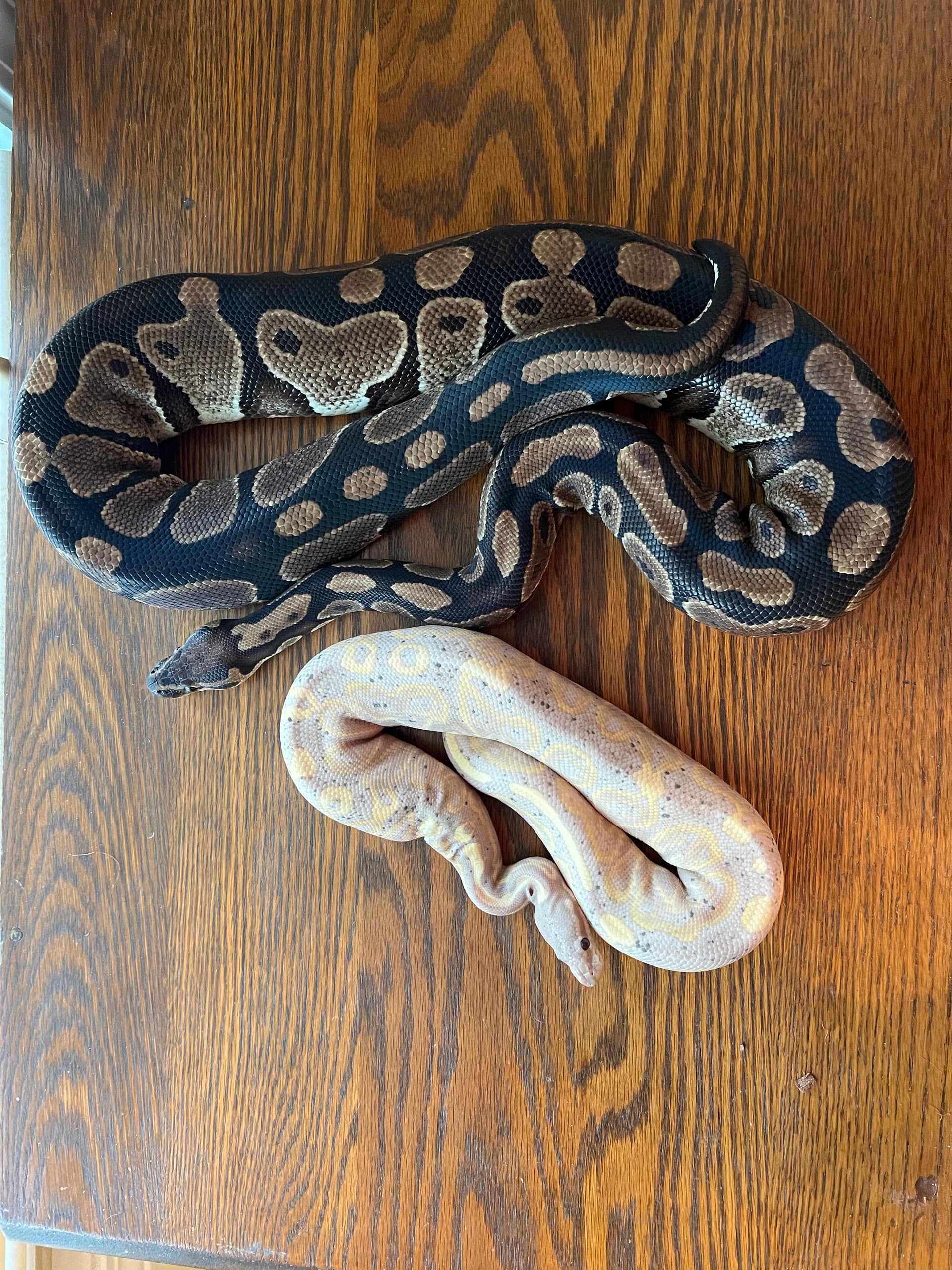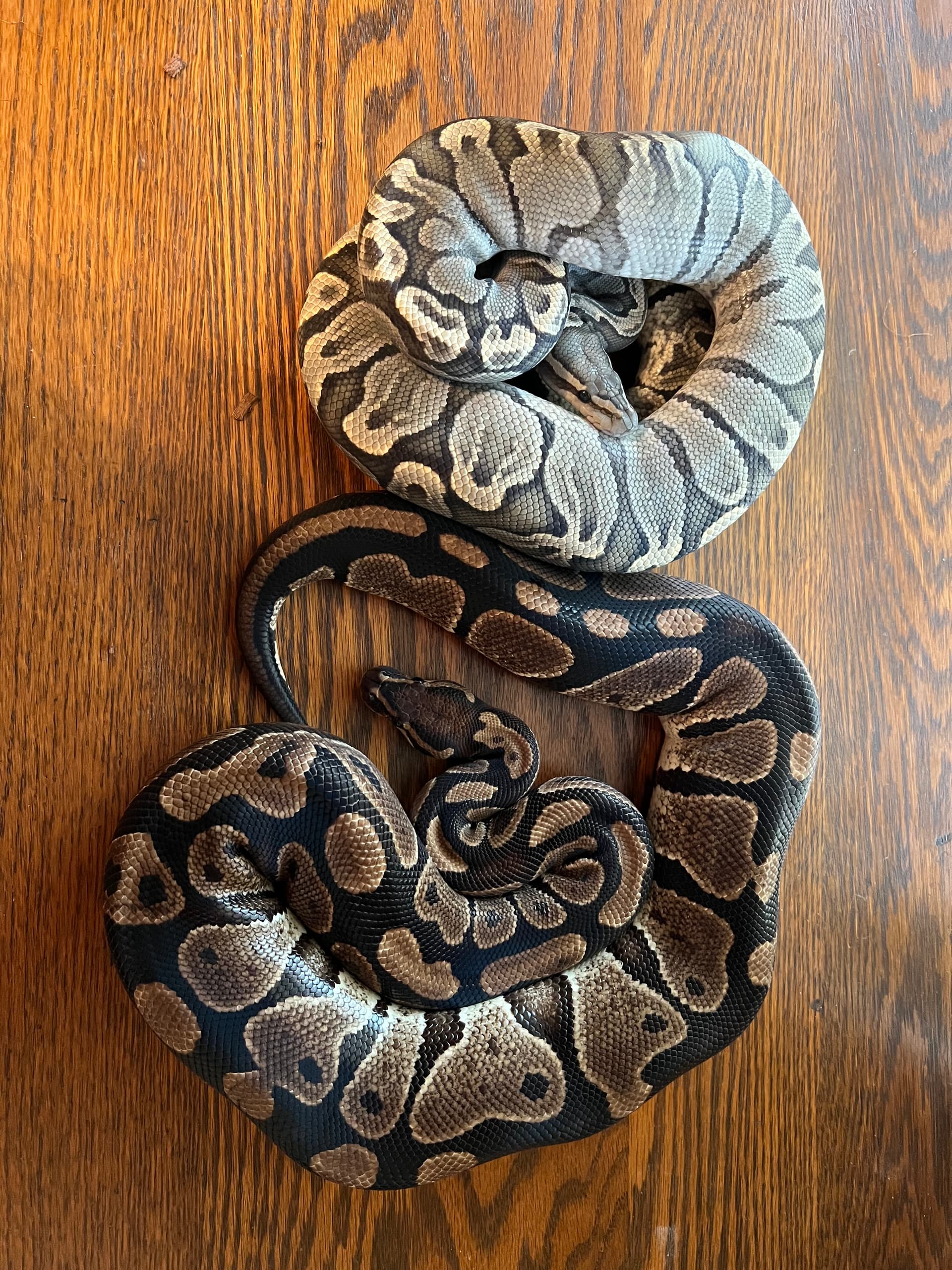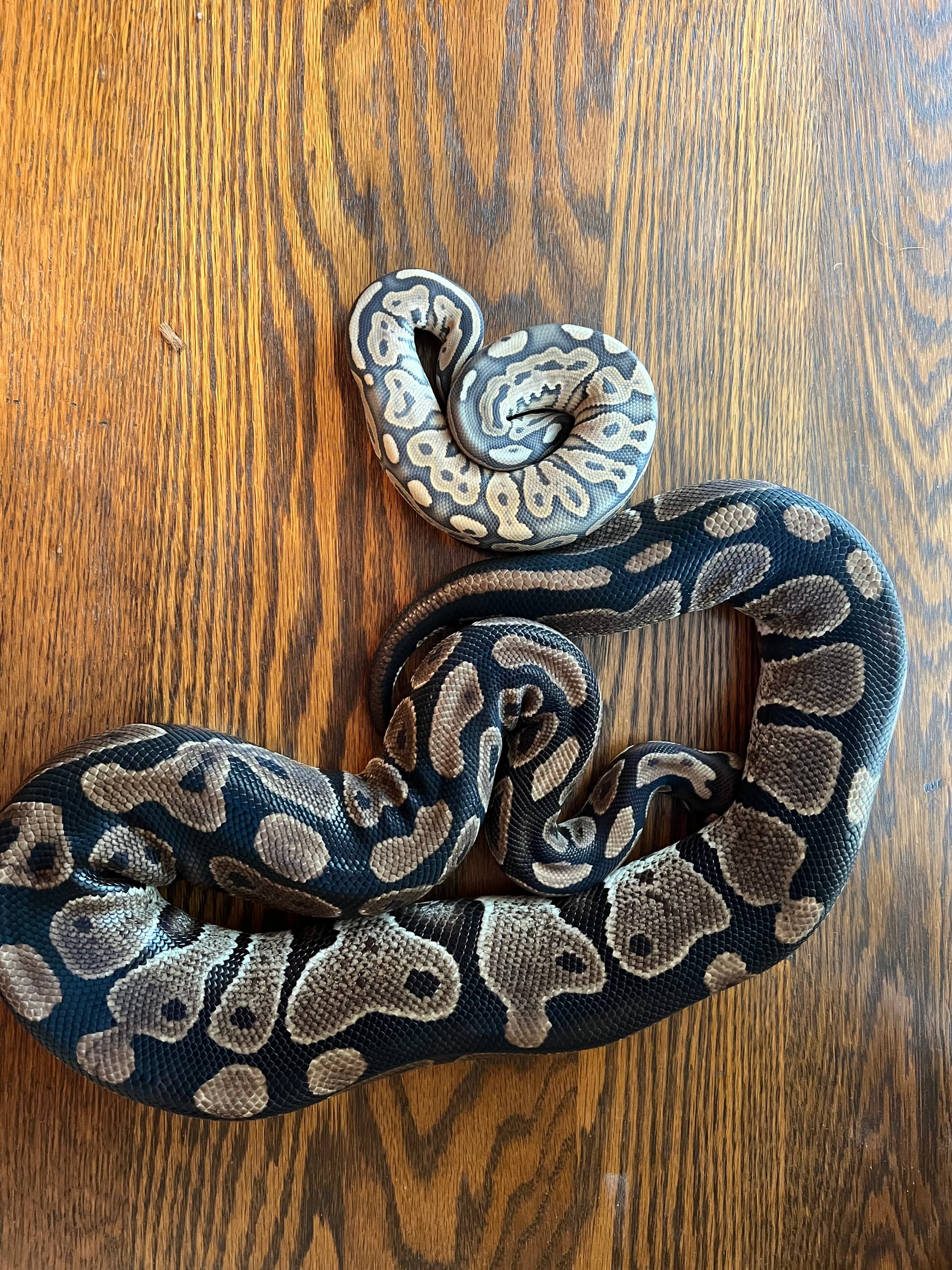Normal
Type: Other
Aliases: Wild Type, Classic, Royal Python, Python Regius
First Produced In: ~70 million years ago.
Availability: Higher
Last Updated: 2023-01-09
Do you have any suggestions or corrections for this article?
Click here to contribute feedback
About
Maximum longevity: 47.5 years (captivity)
The ball python (Python regius), also called royal python, is a python species native to West and Central Africa. It has the potential to reach a maximum adult length of 182 cm (6.0 ft). Pythons are a family of nonvenomous snakes found in Africa, Asia, and Australia that rather than inject venom or attacking prey with barrage of strikes, they are constrictors and will use their muscles to over power and kill.
Ball Pythons are associated with freshwater habitat. They are native to Ethiopia. They are solitary, nocturnal carnivores. They have sexual reproduction. They have parental care (female provides care).
Ball pythons are carnivorous and have mobile lower and upper jaws. They use chemical and visual cues to hunt for their prey. Ball pythons sit and wait to ambush prey. As heavy-bodied snakes, they are less active and instead choose good ambush sites. The feeding strategy is to retract the head and neck and strike rapidly. After the rapid strike, they swallow prey alive or immobilize by constriction. They feed almost exclusively on rodents and eat infrequently. Infrequent feeders have adapted by having the capacity to widely regulate gastrointestinal functioning with feeding and fasting. Ball pythons prey on rodents and are vital to controlling these pests, especially in rural communities.
Adult female ball pythons are larger than adult males. This sexual dimorphism is not present in neonates, but is apparent in adults. Adult females also have longer jaws than their male counterparts. The resultant increase in swallowing capacity may improve their hunting ability.
History
No history yet.
Appearance
Head
The head of a Normal Ball Python is black or dark brown with stripes on both sides, usually just behind the nostrils. They typically have a lighter brown patch on the crown. Normals have dark eyes that often carry the same pattern as their bodies, with stripes or lines running through them. When going into shed, their eyes will change color, appearing a hazy blue or gray.
Body
The Normal Ball Python has a black or dark brown ‘puzzle-like’ pattern with light brown or tan blotches (alien heads) on the back and sides. The spine usually has beads or stripes of pattern, moreso towards the bottom end.
Belly
The belly is white or cream and can be scattered with black markings and stripes. The belly (ventral) scales are larger than anywhere else on the snake.
Tail
Patterns normally come to an end with a single stripe, but it is not unusual for there to be a beaded/chain look. On the underside you will find the animal’s cloaca, which is where reproductive activity and elimination occur.
Controversy
Because of their large range and high, stable population numbers, ball pythons are not considered threatened currently. A change to highly mechanized farming and substantial use of agrochemicals may change survival rates of ball pythons, affecting populations.
Research on the way these snakes behaved under bright light determined that ultraviolet activity may be a factor in capturing prey. Other research suggests that ball pythons may follow the scent trails of their mammalian prey because those trails reflect ultraviolet light.
Proven Lines
No known proven lines.
Related Traits
No known related traits.
Combos
Normals next to Morphs for comparison
